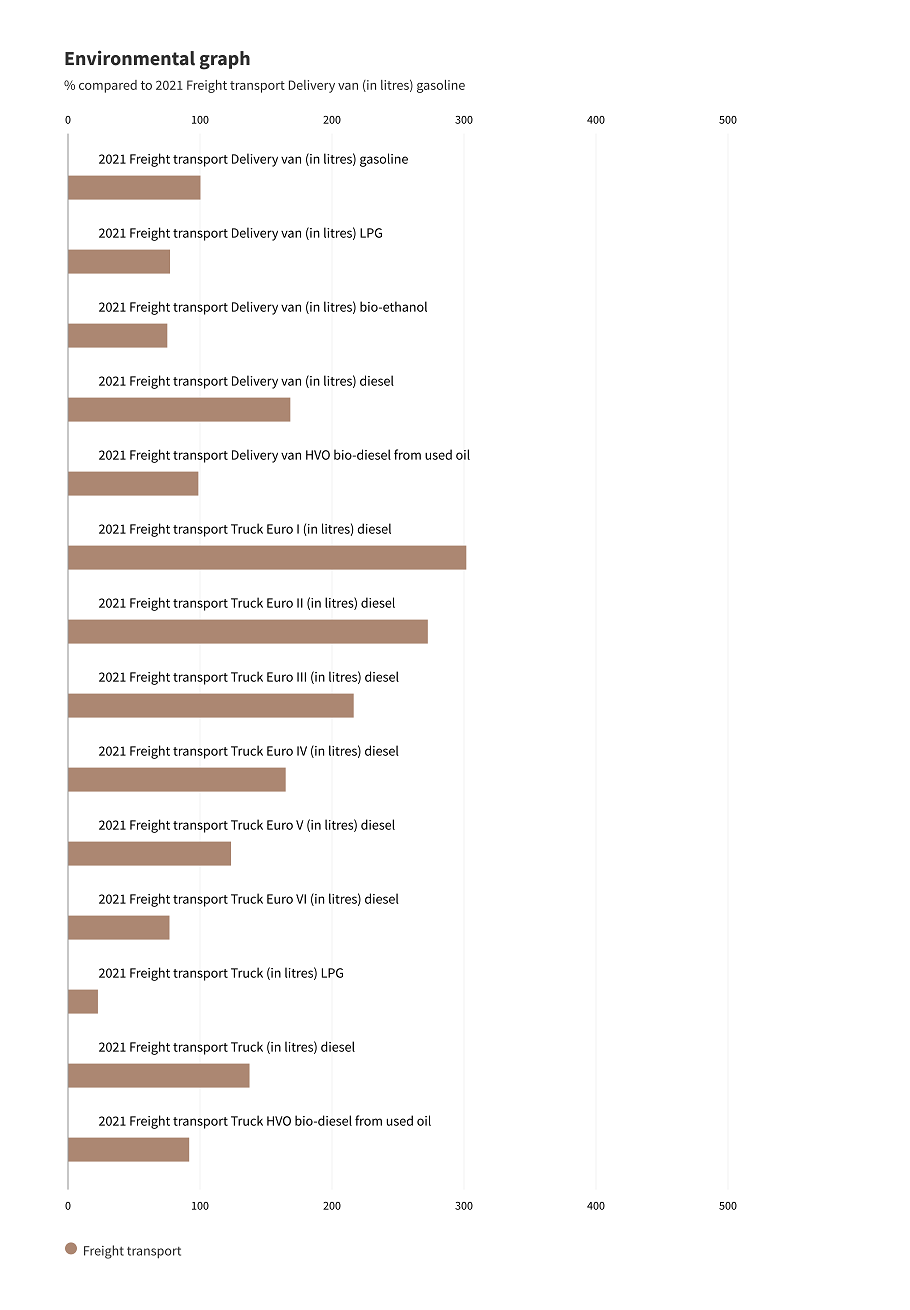Freight transport
In case of scope 3 of the SKAO CO₂‑Performance Ladder it is important to fill in business traffic in liters fuels (instead of kilometers). It is more accurate to enter the quantity of fuel for motorized vehicles, than the mileage.
Pay attention to:
- Even so, you may have data on the kilometers travelled for part of the goods transport and data on the fuel for another part. Please clarify in your notes which data are entered where (see Enter data).
- Useful sources of transport data:
- Printouts of the fuel passes
- Fuel costs from bookkeeping
- Data provided by the lease company
- Annual overview from the transport provider
Note: enter or the quantity of fuel or the mileage of a vehicle. So do not enter both, because in that case the environmental burden of these vehicles are doubled.
The environmental impact of different engines
The graph below shows the environmental impact of 1 liter of fuel burned in different vehicles with different engines. The environmental impact is a combination of particulate matter, CO₂‑emissions and indicators of other environmental themes.
The graph shows that the environmental impact of 1 liter of diesel is less and less with a cleaner model EURO-motor (see graphs 9 to 14). This differs because the newer engines emit less particulate matter. The CO₂‑emissions remain the same regardless of the engine.
